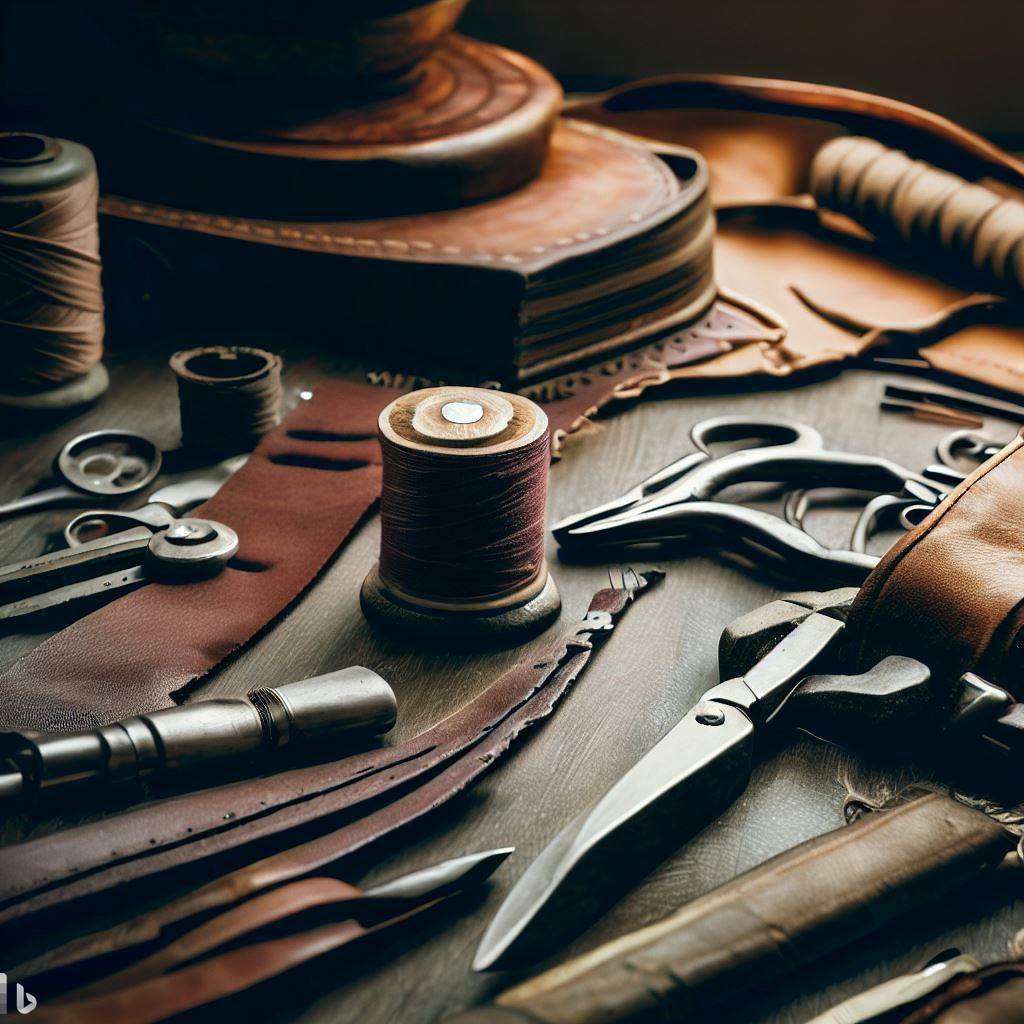Leatherworking and Technology: Combining Tradition with Modern Tools
Introduction
While leatherworking retains its prehistoric roots, today’s makers also utilize new digital technologies and tools to propel the craft forward creatively. From laser cutting to digital modeling, these modern advances fuse with traditional hands-on techniques in innovative ways that expand artistic frontiers.
In this article, we explore how contemporary leatherworkers thoughtfully incorporate emerging technologies within age-old processes to assist creativity rather than replace craftsmanship entirely. We examine key digital aids enhancing efficiency, precision, personalization and production capacities without sacrificing that distinctive handmade character. By harmonizing tech and tradition, leatherworking retains cultural foundations while progressing dynamically into the future.
Digital Design and Patterning
Software streamlines preliminary design phases by optimizing prototyping, customization, and pattern efficiency before meticulous hand assembly.
CAD Programs for Precision Patterns
Computer Assisted Design software like Adobe Illustrator generates cut-ready digital leatherworking patterns from initial sketches assisting precision and material economy. Iterations refine easily.
3D Modeling for Constructability
Digital 3D modeling allows testing physical design elements like grommet placement or hardware articulation in virtual space quickly without wasteful physical mocking up and prototyping. Design issues get resolved nimbly.
Body Scanning for Bespoke Fit
3D full body scans capture client’s precise anatomical measurements to output digital custom patterns tailored for an exact fit. Technology aids bespoke artisanship.
Engraving Designs with Vector Files
Vector drawing files encode template patterns that computerized laser engravers then etch into leather with crisp perfection impossible by hand. Technology performs tedious steps.
Laser Cutting and Engraving
Laser precision far surpasses human hands for cutting and intricate detailing, expanding creative possibilities.
CNC Cutting Rigid Leather Components
Laser cutters slice flawlessly even complicated leather pieces like luggage handles and holster frames needing robust rigidity. The hand controls finishing.
Rapid Digital Engraving
In minutes, computer guided lasers intricately etch decorative textures, logos, names, portraits, or designs onto leather goods. Lasers excel at repetitive tasks.
Rapid Prototyping of Designs
Laser technology allows swiftly iterating design elements on leather mockups without wasting material on discarded attempts. Lasers help refine preliminary development.
Scalability for Production Volumes
Laser capabilities make scaling up production volume for wholesale orders simple by duplicating flawlessly cut or embellished pieces. Some consistency benefits efficiency.
3D Printing’s Potential Applications
Early leather applications of 3D printing suggest provocative future capabilities for customization and novel forms.
Bespoke Production from Body Scans
Using scans, 3D printers construct perfectly fitted custom leather products like ergonomic grips or prosthetics without artisan shaping labor. Printing enables customization.
Organic Leather Shaping and Tooling
Some envision 3D printing’s organic capabilities will eventually emulate hand shaped and tooled leather textures. The hand still finishes and assembles.
Bioprinting Leather-Like Textiles
Already bio-printed materials nearly indistinguishable from leather make futuristic alternatives without animal sources. Printing grows sustainable options.
Limited Printed Molds and Forms
Makers now print experimental press molds for embossed leather or forms for slumping custom leather shapes that would require intense effort to hand carve.
Computerized Machines for Production
Modern programmable pneumatic machines join leather rapidly and consistently but depend upon human judgement.
Efficient Clicking Presses
CNC hydraulic presses consistently cut identically shaped leather components with imspiring force and speed. Their tirelessness aids productivity.
Automated Stitching and Riveting
Programmable machines like cobblers’ Landis stitchers fastidiously stitch leather or install rivets without fatiguing, benefiting speed and precision. But craftsmen operate the equipment.
Foil Stamping Presses
Digitally controlled heated stamping presses imprint leather goods like wallets or journals with client’s initials or logos with consistent depth, placement, and pressure at industrial volumes. Machines augment craftsmen skills.
Finishing and Polishing Tools
Modern power tools like airbrush guns or motorized edge slicker wheels help finish production runs of leather items evenly. Their digitally controlled consistency and efficiency assists human makers.
Online Sales and Marketing Outreach
Digital storefronts and social media provide leatherworkers expanded customer reach beyond only local sales.
Website Sales With Global Reach
Hosted online carts allow makers to market directly to buyers anywhere rather than relying on limited foot traffic. Websites bridge vast geography.
Digital Catalogs Showcasing Collections
Photo galleries with sales links promote products benefiting small studios without a traditional multi-page print catalog budget. Digital allows comprehensive display.
Social Media For Brand Building
Instagram and Facebook pages give followers worldwide a vicarious studio visit experience while introducing brand ethos and values. Lively content engages digitally.
Online Marketplace Consignment
Major digital markets like Etsy, eBay, and Houzz provide amateur and professional makers additional product exposure and sales to broad audiences beyond stand-alone sites.
Future Horizons: Possibilities and Ethics
The ideal future balance between digital aids and heritage craft remains debated within leatherworking’s shifting landscape.
Tradition Guiding Tech Incorporation
Many hope emerging tools get thoughtfully integrated only to assist the handcraft foundations of leatherworking rather than dominating production. Ethics shape adoption.
Limited Digital Handwork Hybridization
In coming decades, more digital interfaces may overlay hand skills, like haptic gloves guiding antique tooling techniques in virtual space. But traditional craft preservation remains core.
Artisan-Focused Technology
Ideally future advances consider empowering independent leather artisans over only aiding industrial efficiency and precision. Tools should enable human creativity.
Preserving Handmade Spirit
If technology ever threatens the distinctive handmade leathergoods identity, many expect a craft revival preserving heritage skills will emerge. Some beauty only hands awaken.
Conclusion
Rather than a binary between technology and tradition, the way forward for leatherworking thoughtfully balances digitally expanded possibilities with retaining treasured handcraft foundations. The dialogue betweenhistoric practices and emerging methods promises to push boundaries for future generations if anchored by ethics, sustainability, and meaningful human purpose. While lasers and algorithms only assist, the craftsperson still imprints spirit. As long as leather retains evidence of that humanity through mark of hand, heart of heritage, and passion for material, its evolving incarnations need not lose connection. The joyous creations to come will synthesize old and new, yet still exude that intangible dream artisans across millennia have dedicated lives to awakening into being through leather’s protean voice.
